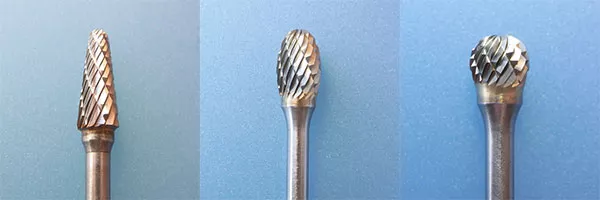Working method of hard alloy carbide rotary file for metal

One of the hot job operations of tungsten carbide burrs mould is high-speed machining, called HSM. HSM has changed the traditional tough or tedious steps: annealing, milling, thermal treatment, ablation or electrical discharge machining, and hand-polished( buffing ). To achieve customer requirements for product finish, more and more manufacturers have been adopting this technology.
1. Introduction to materials and coatings
Tool material must be harder than substitute material. The greater the difference in hardness between the workpiece material and cutter material, less tool wear, and the longer the tool’s service life. The tool material must be guaranteed to have oxidation resistance, on account of the high local temperature.
2. Requirements for clamping seat
Because of the need for high spindle speed in processing, you’d better use HSK-A and HSK-E systems. The clamping flange is mounted on the spindle head and the clamping seat has definite mechanical support in the Z direction, as a result, it does not drag into the main axis because of increased centrifugal force, under higher rotation speed.
It increases in the square as the speed increases. It means that the centrifugal force caused on the spindle with 42000rmp speed is 441 times as much as the spindle with 2000rmp speed in the same unbalanced situation. So, unbalance of the tool holder devices has particularly obvious adverse consequences in high-speed machining.

The chuck holder with good damping characteristics is capable of bringing good results for the rough machining process. Extremely high rigidity and repeated accuracy can be achieved with the reduced joint. Various kinds of transfer twists of reduced knife base rest with the design structure of clamping equipment. They can be quite different.
The foreground of china’s Die industry has been related to hard alloy carbide rotary files, we are supposed to always keep a watchful eye and concern.